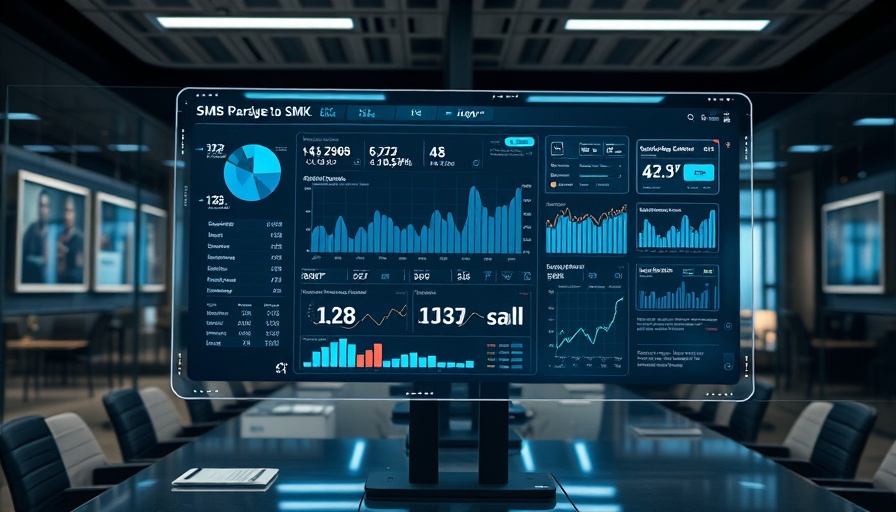
What Does SMB Banking Mean for 2025?
As we look to the future, small and medium-sized businesses (SMBs) are poised to play a pivotal role in driving economic growth and achieving market leadership. In the world of finance, a trend is emerging where SMB banking becomes a crucial pillar for success. The integration of advanced technologies and streamlined financial services can significantly shape how these businesses operate and compete in 2025.
The Value of Targeted Financial Solutions
Traditionally, banking has often overlooked the specific needs of SMBs, focusing more on larger corporations that yield higher profits. However, as the economy evolves, there is a growing realization that the unique needs of SMBs must be addressed to foster innovation and growth. Targeted financial solutions tailored to specific sectors can enhance the operational efficiency of SMBs, allowing them to compete more effectively.
Future Predictions: Shifts in Banking Technology
Looking forward, we can expect significant shifts in the technological landscape of banking. The adoption of AI and machine learning will likely transform how banks interact with SMBs. These technologies can facilitate personalized financial advice and automate complex processes, such as loan approvals or risk assessments. Such advancements will equip SMBs with the tools they need to thrive in an increasingly digital marketplace.
Parallel Example: The Rise of Fintech Solutions
The rapid rise of fintech companies demonstrates the potential of specialized banking solutions for SMBs. Companies like Square and PayPal have successfully capitalized on the need for accessible financial services by offering simplified payment solutions and streamlined loan processes. These examples illustrate how embracing technology can empower SMBs and drive their growth within the competitive landscape.
Counterarguments: Potential Challenges Ahead
While the future appears promising, challenges like regulatory compliance and cybersecurity threats must be navigated carefully. SMBs often lack extensive resources to handle complex compliance issues, making it essential that banks provide adequate support. Moreover, as digital solutions proliferate, ensuring data security will be crucial to maintaining trust between banks and their customers.
Practical Insights: Marketing Process and Control Schedule
For SMBs to succeed in a market dominated by larger players, they must understand the marketing process in conjunction with their banking needs. A well-defined control schedule can help businesses manage their resources effectively, aligning financial planning with marketing strategies. This integration not only aids in achieving targeted sales but also enhances overall performance.
Decisions You Can Make: Steps to Leverage SMB Banking
As we approach 2025, business leaders must make informed decisions about how to leverage banking solutions to their advantage. Key considerations include evaluating potential partnerships with banks that prioritize SMB needs and investing in technology that fosters scalability and efficiency. By doing so, SMBs can position themselves as competitive players in their industries.
The Human Connection: Emotional and Human Interest Angles
At the heart of SMB banking is the human connection. Many entrepreneurs dedicate their lives to building their businesses, fueling their passion for innovation while supporting their communities. Understanding their stories and challenges provides valuable insights into how financial institutions can better cater to their needs. By fostering a deeper connection with SMBs, banks can enhance customer loyalty and foster long-term partnerships.
Conclusion: The Path Forward
In conclusion, as we navigate the complexities of the banking landscape in 2025, SMBs hold the key to unlocking new opportunities for market leadership. By embracing targeted banking solutions and advanced technologies, these businesses can enhance their competitiveness and drive economic growth. Addressing the specific needs of SMBs will not only benefit individual enterprises but also contribute to a more robust and resilient economy.
 Add Row
Add Row  Add
Add 




 Add Row
Add Row  Add
Add 

Write A Comment